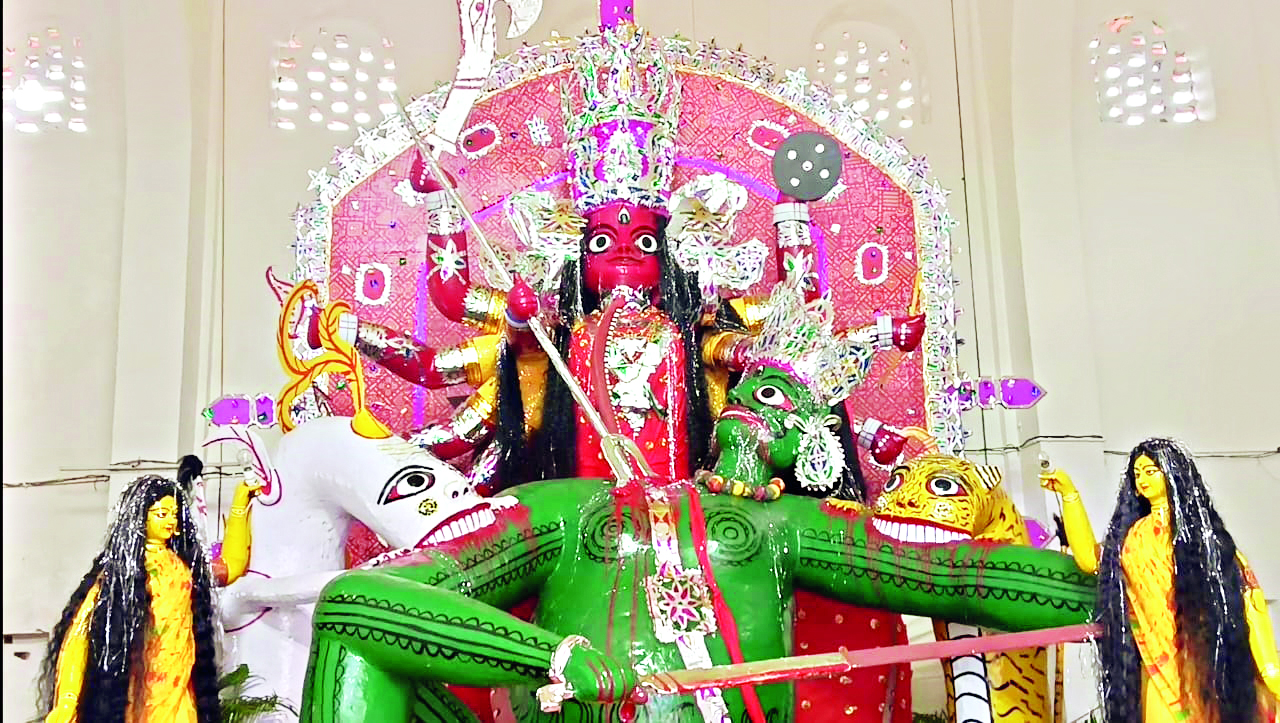Cooch Behar’s Boro Devi Puja stands out with 500-yr-old royal tradition

Cooch Behar: As Durga Puja festivities take the centre stage across Bengal, the Boro Devi Puja in Cooch Behar stands out, preserving a 500-year-old royal tradition with profound reverence. This unique celebration, deeply embedded in the region’s history, offers a distinct cultural flavor through its rituals and the iconic idol of Boro Devi (Durga).
The Boro Devi Puja, believed to have been initiated by Maharaja Naranarayan following a divine dream, is steeped in legend. Others say Maharaja Biswa Singha, at just nine years old, began the tradition by crafting the first idol from Myna wood and bamboo. Since then, the crafting of the Boro Devi idol from Mayna wood has remained a cornerstone of the royal family’s devotion. The elaborate ritual begins on Shukla Ashtami in the month of Shravana when Mayna wood is consecrated at the Dangrai temple in Cooch Behar. The sacred wood is then transported to Madan Mohan Bari for a month-long worship, before being carried in a palanquin to the Debibari Temple on Radhastami.
There, the idol of Goddess Boro Devi is meticulously sculpted by members of the Chitrakar family, who have upheld this craftsmanship for generations. Prabhat Chitrakar, who has been crafting the idol for 33 years, is renowned for creating its expressive features. Notably, unlike conventional Durga idols, the Boro Devi idol is accompanied by Jaya and Bijaya instead of Ganesha, Lakshmi, Saraswati, and Kartik.
A ritual once involving human sacrifice has long been discontinued, though the tradition of offering human blood persists. On Ashtami night, during a private ‘Gupta Puja,’ royal family members from the Siddheshwari area observe the ancient custom of cutting their fingers to offer blood to the goddess, a ritual hidden from the public eye. Additionally, a buffalo sacrifice is conducted on Ashtami, continuing an age-old practice, even in the absence of a reigning monarch.
Despite the absence of royalty, all rituals from the royal era remain intact, maintaining the grandeur of this historic Puja. A fair at the Debibari temple draws devotees from Cooch Behar, Lower Assam, and neighboring districts, adding to the festive atmosphere.
Royal priest Hirendra Nath Bhattacharjee highlighted the significance of the tradition, saying, “The Boro Devi Puja is a living legacy of the Maharajas of Cooch Behar. Even today, every ritual is followed with the same devotion and splendour. The District Magistrate, acting as the royal representative, offers the first ‘Anjali’ on Ashtami, before the general public participates.”



